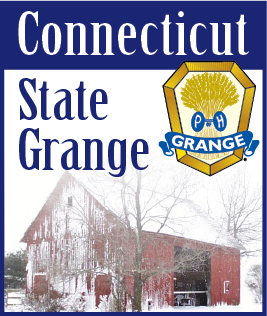| JANUARY 17, 2011 -- Gov. Daniel P. Malloy wants to retain the state's commitment to open space preservation as well as increase the number of slaughterhouses in the state so Connecticut farmers can raise more animals for market.
These two items are part of the governor's jobs-first strategy that he discussed last week with the Working Lands Alliance, which represents 200 individuals and businesses.
During the volunteer steering committee's meeting in the Capitol, the governor walked in at about 9:15 a.m. with Steven Reviczky, the new commissioner of agriculture, sat next to chairman Terry Jones, of Shelton, and listened to the group's concerns for nearly 45 minutes.
"I'm very much dedicated to your industry in the state, for lots of reasons," Malloy told the group of about two dozen land preservationists, farmers, nutrition advocates, scientists and community activists.
He was told that the lack of adequate slaughter facilities in the state makes it difficult for farmers to market Connecticut-grown beef, lamb, pork and other meats.
Jones said there's an "enormous" under-utilization of available land in Connecticut. "We import most of our meat from out west, which is corn-fed, and I think there is a lot of good evidence that grass-fed meat, like the kind we can raise here, is leaner and healthier."
He said state and federal regulations make it hard for the private sector to improve the network of slaughterhouses.
"I think people in Connecticut are ready to take up more Connecticut-grown products," Malloy said, noting the proliferation of farmers markets, some year-round, that are attracting more consumers.
"They're willing to go to a special place," Malloy said. "They're willing to pay a premium."
An estimated 1 percent of state food dollars goes to Connecticut-grown products, but a recent study indicates that if the total increased to 5 percent, it would generate another $600 million a year for state farmers.
"I want to see farmland that has fallen into disuse or no use, to bring it back into production," Malloy said, adding that he's amenable to retaining a $22 million annual commitment to preserving open space, but it's too early in his budget review to announce a final decision.
"The concept is one I basically agree with," Malloy said.
"I think we need to find a way to get more acreage back into meat production in Connecticut," said Malloy, who during his gubernatorial campaign last year twice visited the Jones Family Farm in Shelton to discuss agricultural issues.
"We do feel there's a sense of urgency," said Jones.
Members of the alliance include the state Department of Agriculture, the Connecticut State Grange, the U.S. Department of Agriculture, the Connecticut Forest and Park Association, the Connecticut Farmland Trust, End Hunger Connecticut and other groups.
The alliance also hopes to persuade Malloy to create a task force on Connecticut food and farms.
"I do want to work with everyone in the room," Malloy said. "You are a part of our history. I'm very much dedicated to your industry in the state, for lots of reasons."
After the meeting, Jones described the event as "extremely positive," recalling that Malloy has been interested in farm issues through his gubernatorial campaign and dating to his failed bid for the 2006 Democratic gubernatorial nomination when he was mayor of Stamford.
"Just the fact that he shares our vision for Connecticut agriculture and understands we have so many shared benefits to the state is very good," Jones said, noting that 20,000 people are employed in the $3.5 billion agricultural industries, including tobacco and nurseries.
"The food we produce is of benefit to the overall health of the state, so it's all connected," Jones said.
Malloy went around the square group of tables, collecting suggestions from anyone who wanted to join in.
Gordon Gibson of the Connecticut State Grange suggested that Malloy, who is facing a $3.5 billion deficit or more in the budget that starts July 1, consider renting the use of state forests for maple sugar production, which is less than 1 percent of the amount produced in Vermont.
"The revenue could help the budget," Gibson suggested.
"Oh, yeah, I'm sure that will be a big money maker," Malloy replied sarcastically, rolling his eyes, but smiling. |
